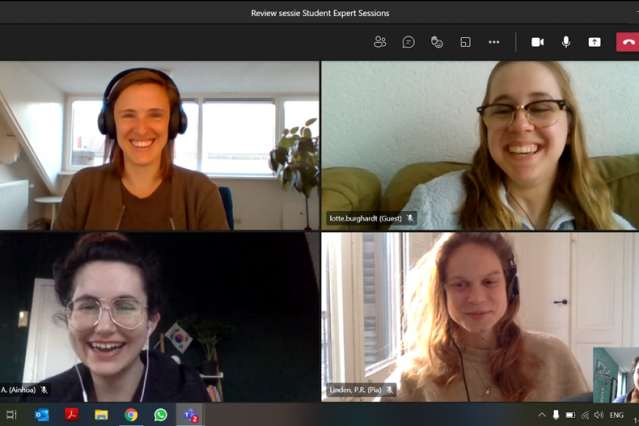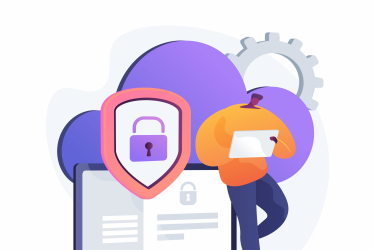Insights
How to choose between online, offline and hybrid teaching
This article maps out online, offline and hybrid learning and helps teachers decide what format is right for their class.
Definitions
Offline teaching – regular (synchronous) teaching with all students and the teacher in one room at the same time (also known as face-to-face, on-site and campus teaching.)
Online teaching – teaching takes place fully online, by using a video tool such as Kaltura Live Room, Microsoft Teams or Zoom.
Hybrid teaching – teaching takes place on campus with a group of physical students and a group of online students following via a video tool.
Note: Blended learning is different to hybrid teaching. Blended is a work format that means students prepare themselves for class using online material, at their own pace (referred to as asynchronous). Classes use different and active work formats to dive into the syllabus instead of traditional lectures. Both online and hybrid teaching can be blended.


In this article, we share our insights to help teachers choose whether online, offline or hybrid is the most suitable format for their class. Moreover, it explores how they might impact teaching at Leiden University and points toward further practical research at the Centre and ICLON.
In his book, Hybride, Matthijs Steeneveld (Leiden Alumni and expert in positive psychology) provides practical tips on how to approach hybrid meetings and teaching. Much of the article builds on insights from Hybride.
How to choose between online, offline and hybrid teaching
Aside from the main learning objectives, there are lots of other goals for teachers’ classes. For instance, checking in with student progress and confidence. As an initial step, write down these secondary goals for your classes. Think of all the things that happen in a class such as small social interactions that contribute to the success of your course.
To choose which format suits your class and goals best, think about these seven requirements:
1. Accessibility and flexibility
At the start of the academic year ask: Are all your students able to come to class? Some may still be in other parts of the world or can only follow online for other reasons. If this is the case, a hybrid solution might make the class accessible for more students than offline only. Another option could be to record the class for students to follow at their own pace. What do your students need when they can’t attend class physically or live?
2. Contact, interaction and connection
How many of your secondary goals relate to contact, interaction and connection? Over the last year, the social part of going to class has been missed by students and teachers alike. Students couldn’t catch up over a coffee or have a chance encounter with a teacher in the hallway before class.
Connection between students happens more easily both online and offline in small groups. Social interaction requires more structure in online education than offline forms. So give students small group assignments or breaks in break-out rooms. This can also mean that you start each class with an energiser activity or let students catch up for five minutes between diving into the content.
In a hybrid teaching environment, structuring social interaction is even more important so that online students aren’t excluded. To foster social interaction, connect the online students to the offline students with mixed working groups. What kind of assignments help offline and online students engage in interactive discussions?
3. Diving deep into the content
In offline classes it’s much easier to gauge student participation than with online students. This means that structuring interaction is key to success. By choosing a teaching approach such as think-pair-share, teachers can nurture engagement even in an online setting. It also helps to provide clear guidelines on your expectations to the class beforehand.
Small breaks can give students time to process what they have learned and can benefit all types of classes. Online students can suffer from Zoom Fatigue if they sit in front of a screen for too long. What activities can you fit into your class that change the pace and create off-screen moments?
4. Group size and spaces
Be careful with groups. When a group gets too big, it’s harder for everyone to contribute to group work and discussions. Capping group sizes at five students is ideal. Another way to ensure everyone contributes equally is by assigning roles and responsibilities. This works in online, offline and hybrid settings. In a hybrid setting, consider whether your offline students also require separate break-out rooms, or whether to mix them with online students.
Have you considered what group sizes and spaces you need for your hybrid teaching?
5. Ownership and responsibility
Have you experienced that awkward silence after asking a question to your online class?. In an offline setting discussions flow easily and visual cues such as a raised hand aid teachers to engage in two-way conversation with their students.Online this works differently. A better way to simulate a response is either to ask people to answer in the online chat together, or call on students directly to answer questions. In break-out sessions you can assign roles to each participant to clarify expectations. Assign a moderator to the class to help facilitate online interaction. This is available for education from the (free) central moderator pool at Leiden University.
How will you create an inclusive hybrid environment with an equal learning experience?
6. Technical and physical requirements
At Leiden, online teaching technology has been in place for a year now, with classes taking place on Microsoft Teams, Kaltura or Zoom. Some teachers use whiteboard tools like Google Jam board or Miro to nurture participation in creative ways.
The minimum requirement is a decent microphone and camera in the classroom for the teacher. Each faculty at Leiden has camera sets available through the teacher support desks, and specific rooms may have extra facilities.
We’ve also looked beyond Leiden and met colleagues at KU Leuven in 2019, where several hybrid classrooms are already in use. They suggested using fabric chairs and carpet on the floor to prevent extra noise and multiple microphoneswith one for the teacher and another to pass around in class. They use large screens to host the online students on. Each so-called video wall has a cameraso the teacher can look virtual students ‘straight into their eyes’. Several Leiden faculties will run pilots with similar rooms. Contact your teacher support desk for more information.
What technical requirements will you need for your hybrid set up?
7. Privacy
Don’t forget privacy concerns when recording a physical class, in particular whether the students will be visible. It is not allowed under GDPR, and consequently by Leiden policy, to require students to turn on their camera during an online class though you may encourage them. This also applies in hybrid teaching. Another issue is exactly which online and hybrid tools you can use. What kind of sensitive or personal data does this tool collect, and is it safe to use? Ask your data privacy officer for advice, or check it with ISSC. Check-out this article on our website if you want to know more about privacy and online teaching.
Do you know what privacy concerns your students may have, and understand the impact of GDPR to online and hybrid teaching?
Get in touch
Do you need advice on whether hybrid or online teaching is right for you? Send us an email at c4i@sea.leidenuniv.nl









